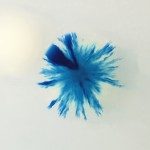Lien vers Pubmed [PMID] – 37022195
Lien DOI – 10.1128/spectrum.00006-23
Microbiol Spectr 2023 Apr; (): e0000623
Corynebacteria of the diphtheriae species complex (CdSC) can cause diphtheria in humans and have been reported from companion animals. We aimed to describe animal infection cases caused by CdSC isolates. A total of 18,308 animals (dogs, cats, horses, and small mammals) with rhinitis, dermatitis, nonhealing wounds, and otitis were sampled in metropolitan France (August 2019 to August 2021). Data on symptoms, age, breed, and the administrative region of origin were collected. Cultured bacteria were analyzed for tox gene presence, production of the diphtheria toxin, and antimicrobial susceptibility and were genotyped by multilocus sequence typing. Corynebacterium ulcerans was identified in 51 cases, 24 of which were toxigenic. Rhinitis was the most frequent presentation (18/51). Eleven cases (6 cats, 4 dogs, and 1 rat) were monoinfections. Large-breed dogs, especially German shepherds (9 of 28 dogs; P < 0.00001), were overrepresented. C. ulcerans isolates were susceptible to all tested antibiotics. tox-positive C. diphtheriae was identified in 2 horses. Last, 11 infections cases (9 dogs and 2 cats; mostly chronic otitis and 2 sores) had tox-negative C. rouxii, a recently defined species. C. rouxii and C. diphtheriae isolates were susceptible to most antibiotics tested, and almost all of these infections were polymicrobial. Monoinfections with C. ulcerans point toward a primary pathogenic potential to animals. C. ulcerans represents an important zoonotic risk, and C. rouxii may represent a novel zoonotic agent. This case series provides novel clinical and microbiological data on CdSC infections and underlines the need for management of animals and their human contacts. IMPORTANCE We report on the occurrence and clinical and microbiological characteristics of infections caused by members of the CdSC in companion animals. This is the first study based on the systematic analysis of a very large animal cohort (18,308 samples), which provides data on the frequency of CdSC isolates in various types of clinical samples from animals. Awareness of this zoonotic bacterial group remains low among veterinarians and veterinary laboratories, among which it is often considered commensal in animals. We suggest that in the case of CdSC detection in animals, the veterinary laboratories should be encouraged to send the samples to a reference laboratory for analysis of the presence of the tox gene. This work is relevant to the development of guidelines in the case of CdSC infections in animals and underlines their public health relevance given the zoonotic transmission risk.





